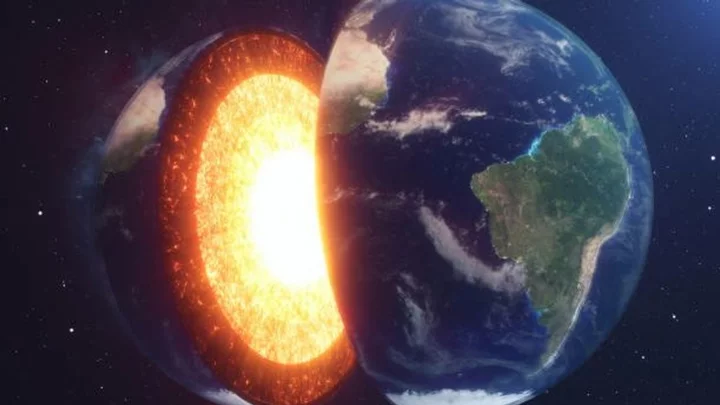
Asian Equities Trade Mixed Ahead of Fed Meeting: Markets Wrap
Stocks in Asia traded mixed at the open on Wednesday as investors await the Federal Reserve’s rate decision.
2023-07-26 08:56

Texas congressman leads thirst and hunger strike to urge heat protections for workers
A Democratic congressman from Texas is participating in a brief thirst and hunger strike Tuesday to "draw attention to the need for a federal workplace heat standard, including protections for rest and water breaks."
2023-07-26 07:28

Senate Targets US Investments in China Through Key Defense Bill
The Senate attached a measure to the annual defense policy bill that would subject some US investments in
2023-07-26 06:45

Spotify raises prices for its premium plans in the US
Spotify Technology said on Monday it was raising the prices for its premium plans by $1 each in
2023-07-24 19:56

Top Taiwan Bank Looks to Southeast Asia in Shift From China
One of Taiwan’s largest lenders is shifting its business and hiring focus to Southeast Asia as its corporate
2023-07-24 07:21

Scientists discover strange 'candyfloss' planet with fluffy atmosphere
Scientists have discovered one of the strangest exoplanets ever that is so light and fluffy that it is actually being compared to candyfloss (or cotton candy if you are American). The planet is called WASP-193b and is 1,232 light-years away and was discovered by researchers at the University of Liège in Belgium. The findings of their study, led by astronomer Khalid Barkaoui has been published on arXiv. The planet, which is believed to be a so-called gas giant is nearly 50 per cent bigger than Jupiter and is orbiting a Sun-like star named WASP-193, which the scientists believe is up to 6 billion years old. Although this star is slightly bigger than our sun it is still said to have the same temperature but compared to Earth, WASP-193b orbits its star just every 6.25 days. Sign up to our free Indy100 weekly newsletter By studying the planet, Barkaoui and his team were able to determine that its density was around 0.059 grams per cubic centimetre. Earth's density per cubic centimetre for comparison, is 5.51 grams whereas candyfloss has a density of 0.05 grams. There are few other examples of a planet like this existing but its close proximity to a star may give an indication as to how it came to exist as its heat is likely to have warmed up the planet's puffy atmosphere, which is mostly made up of hydrogen and helium. This state of the planet is only set to last for around a few ten million years as the temperatures and winds emitted from the star are only likely to strip back the atmosphere further. Due to this scientists cannot fully recreate or determine what is causing WASP-193b's unique atmosphere but is it likely to be a continued source of study to try and determine the cause of this phenomenon. Have your say in our news democracy. Click the upvote icon at the top of the page to help raise this article through the indy100 rankings.
2023-07-24 00:18

Israeli startups act to relocate over judicial shakeup, survey finds
By Emily Rose JERUSALEM Nearly 70% of Israeli startups have taken action to relocate parts of their business
2023-07-24 00:17

Hidden structure discovered in Earth's core could 'rewrite' scientist's understanding of the planet
Scientists think they have discovered a previously unknown hidden structure inside the Earth’s core that could change our understanding of our planet. In school, most of us were taught there are four main layers to the Earth’s structure: the crust, the mantle, the outer core and the inner core. What we know about the Earth’s insides has mostly derived from geologists’ knowledge and observations of volcanoes and seismic waves. But now, scientists believe that there may also be a whole extra layer hidden inside the inner core that no one knew about. Earth’s molten inner core is predicted to be around 5,000 degrees Celsius in temperature and scientists have calculated that it takes up around just 1 per cent of the planet’s total volume. The discovery of a potential fifth layer to the planet’s core came a few years ago when scientists used an algorithm to model thousands of scenarios of the inner core to observe the length of time it takes seismic waves to travel through Earth based on data by the International Seismological Centre. Sign up to our new free Indy100 weekly newsletter Scientists were able to analyse how different material properties within the inner core would affect seismic waves differently and found that some scenarios were certainly more likely than others. The algorithm showed how different materials altered the angle of seismic waves, leading them to hypothesise that there was a change of material somewhere in the inner core. Joanne Stephenson, an Australian National University geophysicist, explained: “We found evidence that may indicate a change in the structure of iron, which suggests perhaps two separate cooling events in Earth's history.” She continued: “The details of this big event are still a bit of a mystery, but we've added another piece of the puzzle when it comes to our knowledge of the Earth's inner core.” While their data isn’t conclusive, it does correlate with other similar studies that have looked into the anisotropy of the Earth’s inner core. Stephenson said: “It's very exciting - and might mean we have to re-write the textbooks!” Have your say in our news democracy. Click the upvote icon at the top of the page to help raise this article through the indy100 rankings.
2023-07-23 20:52

Fed, Netflix Earnings Cast Clouds Over 2023’s Tech-Stock Surge
There’s growing concern on Wall Street that the twin engines of this year’s tech-stock surge are at risk
2023-07-22 21:26

Britons Swap Beach Holidays for City Breaks as Rate Rises Bite
British holidaymakers are trading longer beach vacations for shorter city breaks this summer to save money as they
2023-07-22 13:15

UK Antitrust Chief Rejects Claim of Bowing to Microsoft Pressure
Britain’s top antitrust enforcer pushed back against claims that the watchdog was forced into a reconsidering its Microsoft
2023-07-21 18:49

There are almost no national safety rules protecting workers exposed to high heat
OSHA, the federal agency charged with protecting you on the job, can do little or nothing if your boss orders you to work outside in the searing summer sun.
2023-07-21 18:23
